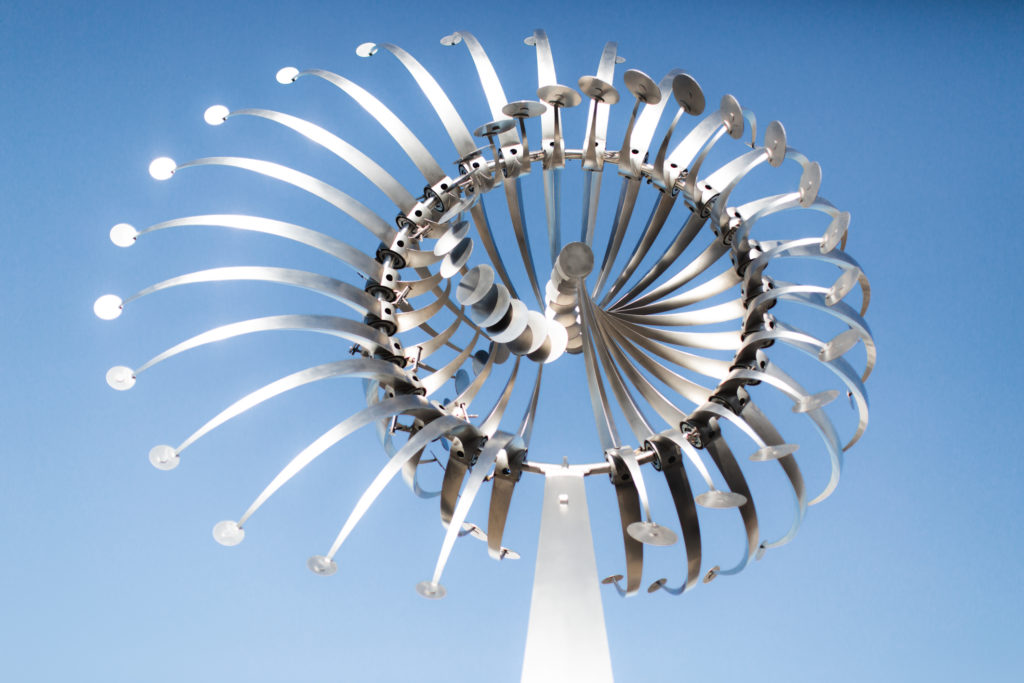Special Award from the President to Anthony Howe - FB

Language Selector
FLORENCE BIENNALE
18 - 26 OCTOBER, 2025
Fortezza da Basso
Viale Filippo Strozzi 1, Florence FI
Opening to the public Saturday 182 pm
Office hours:
- From Monday to Friday9 am to 5 pm
- Saturday and SundayClosed
CustomWidgetTemplate
Special Award from the President to Anthony Howe
XIIth Florence Biennale Special Award from the President to Anthony Howe for his kinetic sculptures
Anticipations for the International Contemporary Art Florence Biennale, to be held at the Fortezza da Basso from 18 to 27 October 2019, have just started to be released. Themed ‘Ars et Ingenium. Toward Leonardo da Vinci’s Legacy of Similitude and Invention’, the forthcoming edition will focus on Leonardo’s multifaceted being: an outstanding artist, he was also a ‘scientist’ committed to exploring nature in order to grasp the fundamental knowledge spanning different disciplines.
Moreover, thinking of Leonardo as an extraordinary exemplum for contemporary creativity, attention will be drawn on the fact that he joined art practice and ‘scientific’ research with experimentation. In that perspective, the "Lorenzo il Magnifico" Special Award from the President of the Florence Biennale will be bestowed to American sculptor Anthony Howe, an outstanding artist renowned for his kinetic sculptures. Powered by the wind, these stunning artworks appear to be like stars, vortexes, or ‘living beings’ – as art historian Carlo Ludovico Ragghianti would define them.
Howe will thus be guest of honour of XIIth Florence Biennale. On that occasion a work of his, possibly the outcome of a new project to be first displayed in Italy, may be exhibited at the Fortezza da Basso.
Born in 1954 in Salt Lake City (Utah, USA), Anthony Howe attended the Taft School in Watertown, Connecticut, followed by Cornell University and the Skowhegan School of Sculpture and Painting. He is regarded a strikingly innovative protagonist of the contemporary art scene for his mesmerizing wind-driven sculptures. With his Lucea he impressed actors and audience at the 2017 Academy Awards ceremony. One year earlier he had amazed with the athletes, spectators and dignitaries attending the Olympic Games opening ceremony in Rio de Janeiro, Brazil, with the cauldron made on commission of the steering committee. Moving gracefully yet powerfully, that pinnacle of artistic achievement mirrored Howe’s vision ‘to replicate the sun using movement to mimic its pulsing energy and reflection of light’.
With his dazzling kinetic sculptures coming to life in his home studio and sculpture park on Orcas Island since the late 1980s, after distinguishing himself as a watercolourist, Anthony Howe boasts having his creations shown in public spaces around the world, including Dubai, the United Arab Emirates, Southern California, and New York City. They are also present in many prestigious collections.
Like Azlon (2017), most of these wind powered sculptures, spinning and spiralling harmoniously in intricate patterns at the slightest breeze, are made from stainless steel and fibreglass which are bent, contorted and hammered into lightweight curvilinear pieces. High-tech textiles for windsurfing, however, might also be used by the artist in the future for new projects.
‘The wind is something that I have always loved to be around, and be in, and play in’, affirmed Howe, whose artistic research for beauty blown with the wind overlaps with experimentation grounded in scientific knowledge and technology of our time. His approach appears to be reminiscent of Leonardo da Vinci’s vision of human life, creativity, and genius in harmony with Nature and its fundamental forces. It may thus be worth remembering a 1487 drawing with notes by Leonardo in the Codex Atlanticus (f. 675r) at the Biblioteca Ambrosiana, Milan, as showing how that great Master of the Renaissance imagined an anemometer as an instrument for measuring the speed of the wind equipped with another device for indicating its direction.
All in all, past and present are expected to meet in the forthcoming Florence Biennale, a ‘wind rose’ for virtually measuring Ars et Ingenium.
